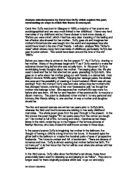How to Install Linux Mint on a PC or Mac - Lifewire.
The Linux Device Drivers 3rd Edition is a good resource for this. It contains all of the information that you would need to map in a PCIe device and create device files that user space programs can use. It also comes with example source code that can be found from the website that accompanies the book. I would recommend purchasing the book if you plan on doing much kernel module development.
Locate and copy the hxge device driver .zip file from the Tools and Drivers CD for the server module operating system on which you want to install the driver. For Oracle Enterprise Linux (OEL) use the corresponding Red Hat Enterprise Linux (RHEL) driver.

Installing the AMDGPU-PRO Driver There are four simple steps involved in the installation of the AMDGPU-Pro Driver: Download, Extract, Install and Configure. The instructions to perform the installation are intended for an Ubuntu installation of 16.04, and should take less than 10 minutes to complete. Before installing the driver, a quick note on how to check if your system already has AMDGPU.

Learn how audio on Linux works and why you should consider Pulse to manage it.. It happens to everyone, and usually only when it matters the most. You might be gearing up for a family Christmas video chat, settling in for a movie night on your big screen TV, or getting ready to record a tune that popped into your head and needs freeing.

Drivers for specific webcam models, or links to project pages hosting code for drivers, are outlined in Section 2.3.The drivers are usually available one of three ways: within the kernel, as a compilable stand alone module, or available as a pre-compiled binary from your Linux distribution.

Learn the basics of Linux device drivers with a focus on device nodes, kernel frameworks, virtual file systems, and kernel modules. A simple kernel module implementation is presented. Introduction to Linux Device Drivers - Part 1 The Basics.

I second you that Linux is the best choice to learn device driver development since you have plenty of examples (the Linux core represents only a small percentage of the total source code, most are device drivers), lots of devices supported by Lin.

The task of writing a kernel driver is complex and beyond the scope of this book. There are some references at the end that will help you on your way. In this section, I want to outline the options available for interacting with a driver—a topic not normally covered—and show you the basic bones of a driver.

You can choose to deploy the driver automatically whenever you build the driver solution in each configuration. For more information about deployment, see Deploying a Driver to a Test Computer and Deployment Properties for Driver Projects. Open the property pages for your driver package project.

Custom codes can be added to Linux kernels via two methods. The basic way is to add the code to the kernel source tree and recompile the kernel. A more efficient way is to do this is by adding code to the kernel while it is running.

It is one of the common building blocks of Linux device-driver code and probably one that you will use in any driver you write. We wait for a frame to be ready or for a signal to interrupt our wait. If a signal occurs we need to return from the system call so that the signal can be sent to the application itself.

The solution is to write a driver for Linux. In the example, we use kernel release 2.0.24, although it will also work in later versions with few modifications. The mobile platform is composed of a set of wheels coupled with two motors (the drive and the steer), a set of 24 sonars which act as proximity sensors for obstacle detection and a set of bumpers which detect collisions.

Device Drivers operate in kernel mode so writing, testing, and debugging drivers can be a tricky task. Drivers should always be well tested before they are installed. Since device drivers do not operate in user mode, the user mode libraries (kernel32.dll, user32.dll, wingdi.dll, msvcrt.dll) are not available to a device driver.



